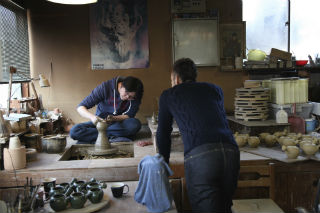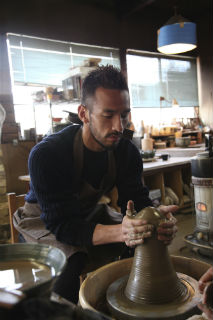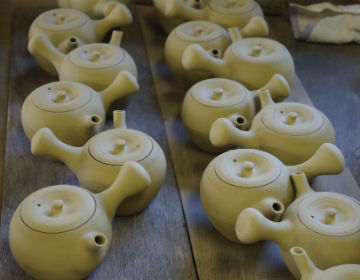Illusionary pottery “Hachinohe yaki”
It is unknown when ”Hachinohe yaki” began, or who the founder was, so it is not known exactly when and who started it, but it was made in the mountain area of Kanisawa within Hachinohe City. It was referred to the locals as ”Kanisawa yaki” until the end of the Edo period. Upon entering the Meiji era, the pottery became increasingly obsolete and was completely extinct. Since there is almost no documentation, its existence disappeared from people’s memory, and by the Showa era, it was known as a phantom pottery.

Reviving “Hachinohe yaki”
The person who revived ”Hachinohe yaki” is Akiyama Watanabe who opened Akiyama Kiln Watanabe Pottery Studio. As mentioned previously, because there was very little documentation, he visited Hachinohe many times, collected information, and opened the kiln in 1975. Afterwards, he discovered the remains of a kiln in the Kanisawa mountains, excavated pottery pieces, and began to establish his own ”Hachinohe yaki”.
We spoke to Akiyama’s son, the second generation pottery master, Masaki Watanabe. He is a ceramic artist who has received numerous awards. Nakata asked ”What is the characteristics of ”Hachinohe yaki”?” and Watanabe answered ”Probably the green.”

Green glaze, the color of Hachinohe
”I learned from the former master that this green is its main feature.” The green color that is created by the unique green glaze has been praised as bringing images of seaweed swaying in the rough waves of the Sanriku ocean, leading to its popularity. While we watched Watanabe turn the potter’s wheel, he asked, ”Would you like to try?”. Nakata said ”Well, this looks hard.” but he took the challenge. Because ”Hachinohe yaki” is used by ordinary people, many of the pieces are closely related to daily life. This time, Nakata decided he would make a teapot. Nakata always focuses on what is in front of him once he starts to work with his hands. Making comments such as ”I wonder if it is better if the spout was a curved.” Nakata finished his teapot with Watanabe’s guidance. It will be exciting to see how it turns out.




